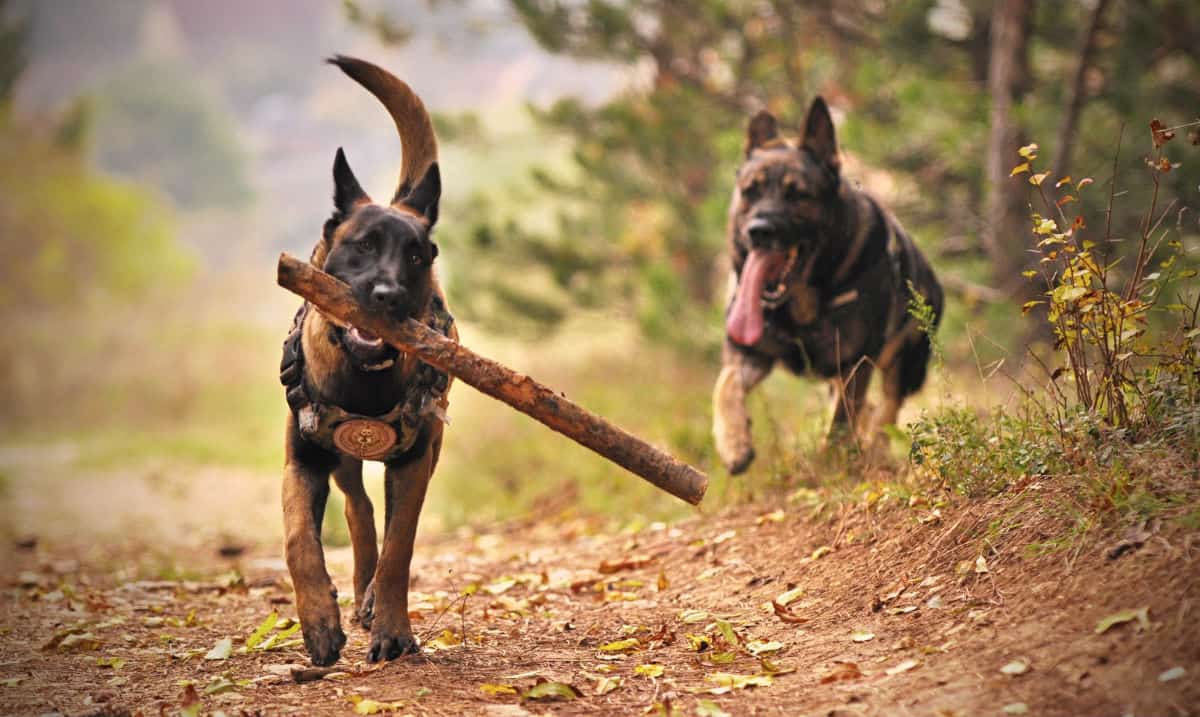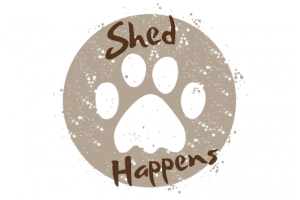15 Tips for Successful Dog Socialization
Whether you’re considering bringing another dog into your home or looking forward to summer days at the dog park, proper socialization is key! After all, no one wants to be the dog owner whose dog refuses to play well with others! If you’re looking for tips and tricks for successful dog socialization, you’ve come to the right place… Let’s break down what you need to know for a well-behaved, well-mannered pup.
The biggest concern when focusing on dog socialization is the safety risk associated. If you don’t work through the steps properly, give your dog time to adjust and address any concerns as they arise, it could lead to fear, aggression, dog fights and serious, or even fatal, injuries.
On the other hand, when socialization is done right, you can help your dog to grow and develop into a friendly, confident companion.
Age Matters
When it comes to successful dog socialization, the age of your dog will play an important part. Don’t take that statement the wrong way… While the process is much easier when your dog is a young puppy, he/she is never too old. However, we don’t all live in a perfect world!
Many families will rescue a dog at an older age, believing that they must accept the dog’s current behaviour when interacting with others. Others experienced a negative situation earlier in their dog’s life that caused them to shy away from the socialization process. Don’t believe the old saying ‘you can’t teach an old dog new tricks.’ It couldn’t be further from the truth.
Why is this so important? Consider, for a second, this statement from the American Veterinary Society of Animal Behavior:
“Behavioral issues, not infectious diseases, are the number one cause of death for dogs under three years of age.”
Let that sink in for a moment. As a responsible pet owner, we do everything in our power to keep our dogs safe and happy. This includes providing a safe home environment, meeting their nutritional needs, assuring that they receive appropriate medical care when needed and taking any necessary steps to reduce or eliminate any outside risks. This includes the risk posed by interacting with other dogs!

Socializing Your Puppy
In an ideal world, all dogs would be socialized starting at the puppy stage. Why? At this age, dogs are much more receptive at this age as they are learning more about themselves and the world around them. The best window of opportunity for training starts at just 3 weeks of age and continues through until 16 or even 20 weeks, depending on the dog. For this reason, responsible breeders will begin the socialization process before your dog is even ready to go home with you.
While the breeder is laying the groundwork, it is your responsibility to continue this work. Here are a few tips that will help you throughout this process:
- Keep it positive. If you are introducing your dog to new places, new people or other dogs, you want them to associate this with a positive mood. Make sure to take regular breaks to give your puppy a moment to relax and absorb everything that has happened. During this time, use treats and praise to keep the positive vibe rolling.
- Take your time. Don’t rush the process. If you try to throw your puppy into the situation too quickly, it can become overwhelming causing them to retreat and react in a fearful nature. Not only will that hurt your efforts immediately, but it could have a negative long-term consequence. Slowly introduce your puppy to new situations for short, controlled periods of time.
- Consider puppy training. There are plenty of great puppy training/obedience classes. This is a great chance for your dog to be around others in a controlled environment, while also providing the opportunity to teach basic obedience commands with the assistance of a skilled professional. If you’re not sure where to start, ask your breeder or veterinarian for recommendations.
- Step outside of the comfort zone. Many owners are tempted, in the beginning, to carry out all socialization within your own ‘safe space’, inviting other dogs over for puppy play dates in your house or back yard. However, you want your dog to develop a comfort that will extend to public spaces as well. Consider planning that puppy play date at your friend’s house. After your puppy has received a full series of vaccinations, you can also take him/her to the local park or to the pet store for additional stimuli.
- Consider all the senses. Socializing your dog is about more than introducing him/her to others. You need to introduce your puppy to new sounds, smells and environments. This includes dog-related scents and sounds such as dog’s barking or playing nearby, but also other stimuli including nearby vehicles, children playing, people speaking, etc.
- Prevent biting. While this is a behaviour that can have an impact on how your dog interacts with others, it can also be addressed during your own interactions. If your puppy gets overexcited and starts biting during your playtime, make a noise to alert the dog (“Ouch!”) and then end the game. Do not resort to negative reinforcement such as yelling at your dog or holding him/her down, as this will likely only make the biting worse as the puppy will react out of fear.

Socializing Your Adolescent/Adult Dog
There are many situations in which you may have an adolescent or adult dog that is in need of socialization. Let’s start by addressing the biggest myth – your dog is NOT too old! If you’ve recently brought an older dog into your family or noticed that your older dog isn’t interacting with others the way you would like him/her to, don’t give up hope. While it may take a little more work, in most cases socialization can still be achieved.
Please Note: There are some situations that require professional intervention due to behavioural issues. This includes severe cases of fearfulness and/or aggression. Please contact your veterinarian or a local behaviourist if you suspect that you may be dealing with a similar case.
Due to the fact that adult dogs are no longer as receptive to unfamiliar situations as puppies, it will take a little more time and patience. Much like with the puppies discussed above, socialization doesn’t happen overnight – It’s a process that requires ongoing effort on your part.
Begin by reading the tips above. The socialization process isn’t entirely different with adult dogs, but there are additional considerations.
- Avoid the dog park. While most puppy owners will avoid the dog parks due to the fact that their puppies are small and ‘delicate’, many owners of adult dogs believe that this is a great opportunity for socialization. The truth is that the dog park can be a frightening place for a dog, especially if they are nervous around other dogs. A large number of dogs can be overwhelming and not all dogs are the park are properly socialized, meaning they can react negatively towards your dog, setting your training back. The dangers associated outweigh any positive benefits during this process.
- Don’t underestimate daily walks. Simply taking your dog for a walk each day can play a key role in your socialization efforts. It’s a great way to introduce your dog to unfamiliar scents, sounds and locations. Change up your route regularly to avoid your dog becoming too comfortable. This is also a great way to burn off some excess energy making it easier for your dog to stay calm during interactions with others.
- Build his/her confidence. If your dog is fearful, the best thing that you can do is to help your dog build his/her confidence. This starts by showing your dog that they can trust you by spending time with your dog, showing affection and fairness. However, at the same time, you need to show your dog that you will be his/her protector. For example, if you are trying to socialize a fearful dog, place yourself between your dog and any dog that may be approaching them until he/she feels comfortable to greet the other dog. If your dog knows that you have his/her back, they will be less likely to react negatively out of fear at the first sign of a strange dog.
- Control which dogs you introduce your dog to. You are already aware at this stage that not all dogs are properly socialized, that’s why you are working with yours. If you want to help your dog learn and adjust, you need to be sure that you are introducing him/her to properly socialized dogs. Use your best judgement and don’t allow anyone to pressure you with statements like ‘but my dog is nice’. You want to find a calm dog that loves other dogs, socializes without overwhelming and plays without getting overly rambunctious.

- Avoid toys and food. Even if your dog is starting to show signs of being social, avoid introducing food or toys into your interactions, especially early on. These often trigger feelings of possessiveness that can quickly lead to aggressive reactions. Hold off on introducing food or toys until the initial socialization has been addressed. At that point, you can start working on effective sharing.
- Don’t allow bad behaviour. If you notice that one or both dogs are exhibiting bad behaviour including snarling, growling, barking, hackling, chasing (when the other dog is clearly trying to get away/hide) or rough play, step in and end these behaviours immediately. Waiting it out will only teach your dog that these behaviours are acceptable. Furthermore, they can lead to dangerous situations if allowed to continue. While you need to end these behaviours, avoid punishment. If your dog is barking or growling out of fear, punishment will only exacerbate these problems.
- Use a muzzle when necessary. If your dog has a tendency to bark or growl when meeting other dogs, use a muzzle to facilitate introductions. This will help to prevent the risk of serious injuries by preventing your dog from reacting aggressively in that moment. Remember, it’s your job as a responsible owner to keep your dog safe.
- One dog at a time. When deciding on the best situation to encourage your dog’s socialization, start with only one dog at a time in a low stress, low-pressure situation. Don’t rush the initial meeting, allowing your dog to observe first at a safe distance until they are comfortable enough to proceed in their own time.
- Don’t be afraid to call on the professionals. Seeking professional help is, in no way, a reflection on you as an owner. Whether you’re just looking to ask a few questions or seeking some assistance, there is very little that the professionals haven’t already heard. No question is too ‘out there’ or too small.

The most important thing to remember when determining the best course of action for successful dog socialization is your role. As your dog’s owner, he/she will rely on you to keep them safe. This includes both taking steps to prevent putting them into a negative situation as well as responding accordingly should a risk arise. Never underestimate this responsibility and never take it lightly.
Did I miss mentioning a tip or trick that you have used in the past that has contributed to your own successful dog socialization? If so, feel free to share it with other dog owners in the comments below!



All great ideas. Don’t have a dog right now but hope to soon.
Socialization is one of the BIG important training considerations when you bring a new dog into the home. After all, no one wants to be that dog owner who can’t take their dog out in public anywhere for fear of how they may act!
Great advice! I definitely made a lot of mistakes with my first dog. Did better with my second and she loves people and other dogs, but maybe the third time will be a charm!!
We all learn and grow with each dog we bring home 🙂 I know that the only reason I haven’t made more mistakes is that I learned from my parents and our family dogs as a child, and even then I’ve made my fair share of mistakes over the years lol
I’ve been your follower for a long and always love your article since and looking for more due to the fact that you always deliver information that I love so much and have also been benefiting from to train my dog. What I love most in this article is your facts here and I quote “The most important thing to remember when determining the best course of action for successful dog socialization is your role.” You really hit the nail on the head here because most dog owners don’t know how powerful their role and responsibility effect on dogs.
Thank a lot for this insight.
Thank you! We play SUCH an important role in the training and behaviour of our pets and recognizing that is definitely the first step!
This is so helpful! My mum and dad are thinking of getting another dog and they don’t want it to end up like our last one (very unsocialized and hated other dogs). I’ll definitely be passing this on to them!
It takes a bit of work, but definitely pays off in the long run! Both of us are rescues and needed some work on socialization when we brought them home. Indy is still working on not being afraid of other dogs but Dav loves everyone, dogs and people alike.
These are great tips! I loved socializing my dog when she was a puppy — it was such a fun bonding experience for the two of us! I hope to get another dog soon so I can go through all of these steps again!
Our pups are SUPER bonded. Dav loves all other dogs that she meets but Indy boy came to use with some social anxiety (we rescued him), so we’ve been working on it. He’s just super nervous around new dogs.